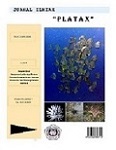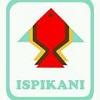Conditions of Substrate and Water Quality Supporting Activites as A Growth Factor in Mangrove at Coastal Basaan I, South East District Minahasa
DOI:
https://doi.org/10.35800/jip.1.4.2013.3704Abstract
Mangrove forest vegetation contained in Basaan The village has an important role, both ecologically and economically for the community. The mangrove ecosystem's ability to maintain its ecological function depends on factors - environmental contributing factors, namely the quality of the environment and substrate conditions. The purpose of the study was to measure the quality of environmental factors and substrate waters around mangrove and describe the environmental capacity of water at mangrove ecosystem. The method of research by sampling at two locations: station A and station B by taking water samples in which the chemical and physical parameters of the test carried out in the Laboratory of Water archipelago and substrate samples which were tested in Laborarotium Soil Fertility, Faculty of Agriculture Unsrat Manado. The test results showed that the water temperature is 310C and TSS levels <1 (station A) and 44 (station B), pH 7.3; salinity 32; NH3 0.26 (A), 0.05 (B); PO4 0.122 (A ), 0.013 (B); H2S < 0.02; DO 10.10 (A), 8.95 (B). For the test results is the basic substrate pH H2O 7.6 (station A) and 7.5 (station B) neutral category; pH KCl 5.1 (A) and 5.4 (B) neutral category, N 0.44 (A ), 0.34 (B) medium category; P2O5 1.98 (A) and 15.35 (B) medium category; organic C-5.83 (A) and 3.98 (B) high category; K2O 2, 27 (A) and 23.48 (B) medium category. Conditions coastal waters village Basaan I still quite good because of the support and the dukungya still need attention orthoposphat parameter whose value is higher than the standard.
Â
Keywords : water quality, substrate base, carrying capacity
Downloads
How to Cite
Issue
Section
License
COPYRIGHT
Authors who publish with this journal agree to the following terms:
Authors hold their copyright and grant this journal the privilege of first publication, with the work simultaneously licensed under a Creative Commons Attribution License that permits others to impart the work with an acknowledgment of the work's origin and initial publication by this journal.
Authors can enter into separate or additional contractual arrangements for the non-exclusive distribution of the journal's published version of the work (for example, post it to an institutional repository or publish it in a book), with an acknowledgment of its underlying publication in this journal.
Authors are permitted and encouraged to post their work online (for example, in institutional repositories or on their website) as it can lead to productive exchanges, as well as earlier and greater citation of the published work (See The Effect of Open Access).


















